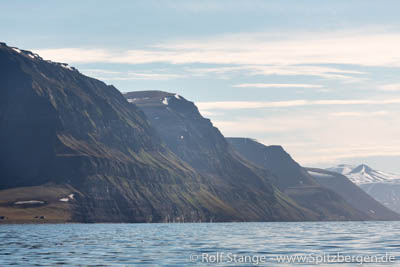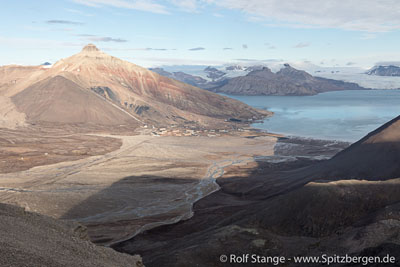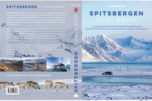-
current
recommendations- Liefdefjord
New page dedicated to one of Spitsbergen's most beautiful fjords. Background information and many photos.
- New Spitsbergen guidebook
The new edition of my Spitsbergen guidebook is out and available now!
- Liefdefjord
New page dedicated to one of Spitsbergen's most beautiful fjords. Background information and many photos.
Page Structure
-
Spitsbergen-News
- Select Month
- May 2025
- April 2025
- March 2025
- February 2025
- January 2025
- December 2024
- November 2024
- October 2024
- September 2024
- August 2024
- July 2024
- June 2024
- May 2024
- April 2024
- March 2024
- February 2024
- January 2024
- December 2023
- November 2023
- October 2023
- September 2023
- August 2023
- July 2023
- June 2023
- May 2023
- April 2023
- March 2023
- February 2023
- January 2023
- December 2022
- November 2022
- October 2022
- September 2022
- August 2022
- July 2022
- June 2022
- May 2022
- April 2022
- March 2022
- February 2022
- January 2022
- December 2021
- November 2021
- October 2021
- September 2021
- August 2021
- July 2021
- June 2021
- May 2021
- April 2021
- March 2021
- February 2021
- January 2021
- December 2020
- November 2020
- October 2020
- September 2020
- August 2020
- July 2020
- June 2020
- May 2020
- April 2020
- March 2020
- February 2020
- January 2020
- December 2019
- November 2019
- October 2019
- September 2019
- August 2019
- July 2019
- June 2019
- May 2019
- April 2019
- March 2019
- February 2019
- January 2019
- December 2018
- November 2018
- October 2018
- September 2018
- August 2018
- July 2018
- June 2018
- May 2018
- April 2018
- March 2018
- February 2018
- January 2018
- December 2017
- November 2017
- October 2017
- September 2017
- August 2017
- July 2017
- June 2017
- May 2017
- April 2017
- March 2017
- February 2017
- January 2017
- December 2016
- November 2016
- October 2016
- September 2016
- August 2016
- July 2016
- June 2016
- May 2016
- April 2016
- March 2016
- February 2016
- January 2016
- December 2015
- November 2015
- October 2015
- September 2015
- August 2015
- July 2015
- June 2015
- May 2015
- April 2015
- March 2015
- February 2015
- January 2015
- December 2014
- November 2014
- October 2014
- September 2014
- August 2014
- July 2014
- June 2014
- May 2014
- April 2014
- March 2014
- February 2014
- January 2014
- December 2013
- November 2013
- October 2013
- September 2013
- August 2013
- July 2013
- June 2013
- May 2013
- April 2013
- March 2013
- February 2013
- January 2013
- December 2012
- November 2012
- October 2012
- September 2012
- August 2012
- July 2012
- June 2012
- May 2012
- April 2012
- March 2012
- February 2012
- January 2012
- December 2011
- November 2011
- October 2011
- September 2011
- August 2011
- May 2011
- April 2011
- March 2011
- February 2011
- January 2011
- December 2010
- November 2010
- September 2010
- August 2010
- July 2010
- June 2010
- May 2010
- April 2010
- March 2010
- February 2010
- November 2009
- October 2009
- August 2009
- July 2009
- June 2009
- May 2009
- April 2009
- March 2009
- February 2009
- January 2009
- December 2008
- November 2008
- October 2008
- August 2008
- July 2008
- June 2008
- May 2008
- April 2008
- March 2008
- February 2008
- April 2000
- Select Month
-
weather information
-
Newsletter

| Guidebook: Spitsbergen-Svalbard |
Home → September, 2017
Monthly Archives: September 2017 − News
Several polar bears observed near settlements
Several polar bears have been seen near Longyearbyen and other settlements in the past few weeks.
Polar bears look cute, but can be nasty when they are looking for food
One of the bears – a 17-year-old male – had to be anesthetized and transported by helicopter to Nordaustlandet in the north-east of Spitsbergen, after devastating several huts at Kap Laila River between Longyearbyen and Barentsburg on 15 September. Polar bear expert Jon Aars from the Norwegian Polar Institute confirmed, that this was already the bears second flight with a helicopter. The polar bear was marked as a cub and already registered in 2001, when he destroyed a hut together with his brother and mother. The mother was also observed later in similar burglaries.
This is not an unusual behavior for a polar bear, says Jon Aars. Some polar bears even seem to have specialized in hut burglaries. But to stun the polar bears and fly them out can just be a short-term solution. Last year in April a polar bear from Longyearbyen was flown to the island of Nordaustland several hundred kilometers away. Only one year later he was back at the Isfjorden.
At the beginning of September, a female polar bear with two cubs was observed at Revneset – a few kilometers north of Longyearbyen. Three attempts have already been made to hunt them away by means of a helicopter. The three bears returned twice after a few days and reappeared near Longyearbyen. After the third attempt, the bears have not yet been seen again.
Another polar bear with two cubs was observed near Svea and several bears were seen near Isfjord radio at Kapp Linné the last month.
The fact that so many polar bears appear in the vicinity of human settlements in such a short time does not occur too often, but is probably coincidence. Jon Aars believes that such visits could occur more often in the future, as polar bears have been protected for many years. Genetic research shows that polar bears tend to visit the same areas for several generations. People in Longyearbyen will probably have to get used to frequent visits of polar bears. Or the other way around.
Polar bear mum with cub
Source: Svalbardposten
Italian lost and found
After the search after a sailing boat last week, SAR (search and rescue) forces from Sysselmannen and Red Cross were, only a few days later, again out on a major mission. On Saturday afternoon at 16.20 hours, the local hospital in Longyearbyen received a call from an Italian person who was stuck on a steep slope and not able to move. The man said that he could see the airport, without giving further details about his position. Next to lack of local knowledge, language difficulties may have come in here. He finished the conversation without leaving his name or contact details, so it was not possible to contact him again later.
Hence, SAR forces had to move out in darkness and strong winds. The Red Cross searched Platåberget, which is situated near the airport, with about 30 people. Finally, a light signal was seen on a steep slope above the sea on Fuglefjella, between Bjørndalen and Litle Bjørndalen. Strong winds prevented SAR forces from reaching the area by helicopter, so the Red Cross had to walk a longer distance to get to the site. Shortly after 5 a.m. the man was finally rescued; he had spent at least about 13 hours in his position. All involved got back to Longyearbyen thereafter in good condition.
The incident shows how important it is to have at least basic local knowledge and means of orientation as well as the ability to make a proper emergency call if worst comes to worst. Next to some knowledge of a language used locally, or at least a contact who can provide that, this involves the correct local emergency contacts (the Sysselmannen), name and phone number. The man was in very steep terrain, in darkness, strong wind and without local knowledge and orientation. The incident provides a negative example in several ways.
The steep slope of Fuglefjella between Bjørndalen and Litle Grumantdalen on a nice summer day, where an Italian tourist was rescued early Sunday morning in darkness and wind.
Source: Svalbardposten
Sailing boat lost and found
There have been strong winds up to storm force in northern Spitsbergen yesterday (Monday). Two smaller boats seem to have gotten into potentially serious difficulties. Emergency signals have been triggered and search and rescue forces are in the area with helicopters and coast guard ships.
SV Antigua (where the present author is on board) is also in the area, but we did not have more problems than some cases of seasickness during our sailing passage yesterday. So SV Antigua is NOT affected by any serious problems.
Update: after several hours searching in the northwest of Spitsbergen, where also several tourist ships including SV Antigua assisted, the boat was on Tuesday found „in good condition“. The SAR mission was officially abandoned by the coast guard. It was later stated that it was a local boat from Longyearbyen. The emergency signal position was from Magdalenefjord, while the boat was found in Wijdefjord, almost 100 km away as the ivory gull flies. The emergency signal had been trigger automatically without the crew being aware of it; probably, the emergency beacon was lost in heavy seas and triggered itself.
Wind force 8 on Monday at the north coast of Spitsbergen. Photo © Alexander Lembke.
Strong wind up to storm force in North Spitsbergen
There have been strong winds up to storm force in northern Spitsbergen yesterday (Monday – 2017/09/18). Two smaller boats seem to have gotten into potentially serious difficulties. Emergency signals have been triggered and search and rescue forces are in the area with helicopters and coast guard ships.
SV Antigua (where the present author is on board) is also in the area, but we did not have more problems than some cases of seasickness during our sailing passage yesterday. So SV Antigua is NOT affected by any serious problems.
Update: after several hours searching in the northwest of Spitsbergen, where SV Antigua also assisted, the boat was found »in good condition«. The SAR mission was officially abandoned by the coast guard. At the moment, no further details regarding the identity of the boat or other are available.
Update: According to Svalbardposten, it was a local sailing boat from Longyearbyen. The emergency beacon was lost and automatically activated during heavy weather. The crew was not aware of that.
Source: Rolf Stange via OnSat-Mail directly from SV Antigua
1600 liters of diesel lost in Mimerdalen
1600 litres of diesel were lost on Friday during a helicopter flight in Mimerdalen near Pyramiden. The fuel was hanging under the helicopter to be transported to a station on a mountain west of Pyramiden operated by Longyearbyen airport for aerial navigation.
A rope broke during the flight, so the diesel fell down and crashed on the gravel plain of the river bed. It could not be retrieved and was lost in the environment: in the river gravel, one of the many small rivers or finally in the fjord.
The helicopter was operated by Lufttransport, a company that is also responsible for the helicopter logistics of the Sysselmannen, including Search and Rescue operations. The incident is currently under investigation.
Mimerdalen near Pyramiden, where 1600 litres of Diesel were lost from a helicopter on Friday.
Quelle: Svalbardposten
Summer hiking route up to Larsbreen destroyed by landslide
The mountains and glaciers around Longyearbyen have a lot of great hiking opportunities. Right now it looks like there is one less: the western part of the moraine of Larsbreen, which is part of the popular summer route ascending Larsbreen towards the glacier itself or the near-by mountains (Trollsteinen, Sarkofagen) has been strongly affected by landslides this summer. This is generally a natural process in a moraine area that consists of a thing layer of sediment resting on steep slopes of clear glacier ice. The area had already been affected by minor landslides in recent years.
This summer’s landslides took the area with the hiking route from Longyeardalen up to Larsbreen. Now, there is a steep slope of mostly exposed glacier ice covered with a thin layer of sediment (mud and stones). The “way” below the slope is exposed to further landslides and rockfalls and hence currently not a safe alternative.
It remains to be seen if the winter route can still be used. Winter and summer routes are slightly different and frost and snow change the terrain significantly. Meanwhile, Longyearbreen and Vannledningsdalen remain generally available as hiking routes up to Larsbreen, Sarkofagen and Trollsteinen.
View from Gruvefjellet to the moraine of Larsbreen. The area recently affected by landslides is roughly marked by the red circle (the photo was taken before these landslides happened).
News-Listing live generated at 2025/May/04 at 03:16:45 Uhr (GMT+1)


































